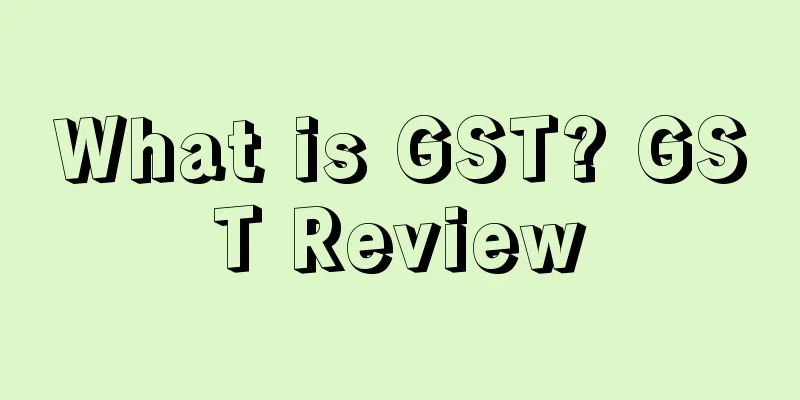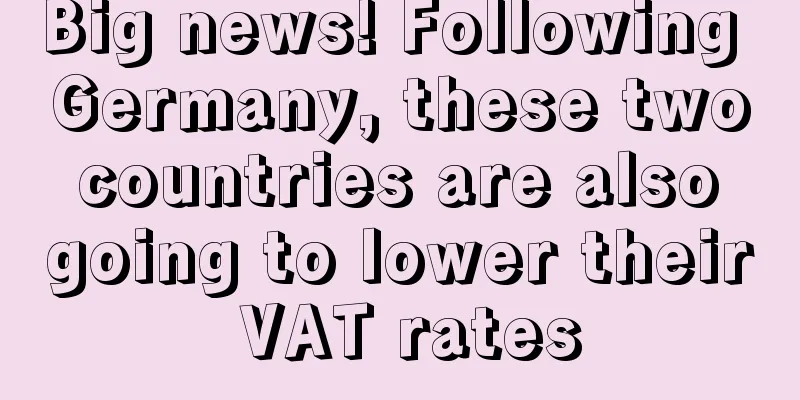What is GST? GST Review

|
GST (Good and Service Tax) is a tax on most goods and services sold in Australia. It is not linked to personal direct income and is only required to be paid when goods are sold, services are provided or related activities are carried out in Australia. It is usually 10% of sales. GST registration threshold If you sell low value imported goods to Australian consumers and your total sales amount is AUD 75,000 or more in a 12 month period, you will need to register and pay GST. GST collection object 1. If you are a business selling low-value goods directly to Australia, you may need to charge GST on the sale. 2. If you are an operator of an online sales platform (such as an application or website) and merchants sell low-value goods to Australian consumers through the sales platform, you will be responsible for collecting GST. 3. If you are a merchant selling imported low-value goods through an online sales platform, the online sales platform will be responsible for collecting GST. 4. If you are a forwarder who assists consumers in transporting goods to Australia, you may need to charge GST as the forwarder of the goods. 5. Under the new policy, transporters are generally not regarded as transshippers and are not responsible for collecting GST. How to calculate GST If the product includes GST (GST included), divide the product price by 11 to get the GST value. If the product does not include GST (GST excluded), divide the product price by 10 to get the GST value. Businesses with GST of more than $75,000 will need • Register for GST with the Australian Taxation Office (ATO) • Collect GST on taxable sales • Report GST to the ATO • Pay GST to the ATO. Risk Aversion Many sellers have fallen into traps because they filled in the incorrect listing requirements for the item’s location, resulting in penalties such as listing removal, account restrictions or freezes, and even the risk of being reported and subject to tax compliance investigations. The risks can be avoided by taking the following measures. 1. Use accurate city and country information to describe the location of the item. 2. Accurately state the location of the item (the item cannot be listed as being in the UK but shipped from China). 3. Accurately state the location of the item and the location described in the logistics plan. The two locations must be consistent (it cannot be located in the UK but shown in the logistics plan as China). 4. If you use a direct mail logistics solution, the place where the items are shipped (such as China) should be used as the location of the items. 5. If the goods are shipped through an Australian overseas warehouse, when there is a shortage of goods, the seller should notify the buyer and cancel the transaction, and the seller should not ship from other places (such as from China). Features 1. Before July 1, 2018, low-value (less than or equal to 1,000 Australian dollars) items imported into Australia were tax-free; after that, a 10% Goods and Services Tax (GST) was levied. 2. The goods and services tax (GST) is paid by consumers. In other words, sellers do not need to pay an additional 10% goods and services tax (GST). 3. The Goods and Services Tax (GST) is collected by the electronic sales platform, which then pays the collected tax to the Australian government. progress Amazon Australia announced that it will start collecting GST from July 1. Since July 1, 2018, eBay has also begun to respond to relevant Australian regulations and collect a 10% Goods and Services Tax (GST) on low-value items (≤1,000 Australian dollars) imported into Australia, and pay the collected tax to the Australian government. Policy changes 1. It is confirmed that from July 1, 2018, the Australian government will cancel the original regulation that 10% GST will be levied only when the total FOB price exceeds AUD1000, that is, all goods imported from Australia will be unconditionally levied 10% GST. 2. The original tariff threshold remains unchanged at FOB value AUD1001. 3. For goods imported after July 1, 2018, with a FOB value of more than AUD1,000, the GST and DUTY collection methods and tax amounts remain unchanged. Goods with a value less than AUD1,000 are also subject to 10% GST. 4. If the total value of the goods does not exceed AUD1000, GST can be exempted or deferred in the following circumstances: Overseas shippers with an annual turnover exceeding AUD75,000 (according to the Australian fiscal year, which is from July 1 to June 30 of the following year) can apply for an ABN or ARN from the Australian Treasury Office (ATO). When declaring the import of goods to the customs, the seller's ABN and ARN can be provided for direct customs clearance, but relevant sales reports must also be submitted to the Australian Taxation Office every year. Amazon, Alibaba, eBay, and Etsy will automatically add 10% GST to the sales price of overseas sellers from July 1, so customers have already paid GST when they check out. In this case, GST can be exempted when the goods are imported, but the transaction ID of the goods from these four online stores needs to be provided when clearing customs. Development History -Canada's GST was introduced on January 1, 1991 by then Prime Minister Martin Brian Mulroney. The tax was controversial and became one of the factors that led to the defeat of the Progressive Conservative Party of Canada in the 1993 general election. The Liberal Party of Canada, which won the 1993 general election, promised to abolish the tax in its election manifesto at the time, but did not fulfill its promise during its time in office. -Australia's GST was introduced on July 1, 2000 by then Australian Prime Minister John Howard, replacing the sales tax system previously implemented by the government, and planned to abolish local taxes such as stamp duty and land tax. -The Australian Federal Parliament has passed the new GST bill, which will impose goods and services tax (GST) on low-value sales goods entering Australia (i.e. customs value equal to or less than A$1,000) from July 1, 2018. |
<<: What is Flash Express? Flash Express Review
>>: What is a Box Letter? Box Letter Review
Recommend
What is the National Tax Service of Korea? Review of the National Tax Service of Korea
The National Tax Service (NTS) is the central admi...
Walmart surpasses Amazon to become the preferred online grocery platform for American consumers!
According to Chicory's third annual online gro...
Walmart opens third-party marketplace to Canadian sellers
According to foreign media reports, Walmart recent...
The crisis continues! Another US bank declared bankruptcy! Ranked third in history
The bankruptcy of Silicon Valley Bank has not yet ...
What is Shihuo.com? Shihuo.com Review
Shihuo is a website that specializes in discount p...
US e-commerce sales rose in July! Demand for some categories fluctuated greatly
It is learned that according to data from MasterCa...
Mexico welcomes Christmas shopping boom! Online orders will increase by more than 70% year-on-year!
<span data-shimo-docs="[[20,"获悉,根据物流公司Simp...
What is Crowdcube? Crowdcube Review
Crowdcube is an equity crowdfunding platform where...
5 pictures to understand Amazon's development status in the United States
It is learned that according to eMarketer's fo...
Amazon sellers share their experience in clearing inventory
Clearance experience According to the priority, i...
Amazon scams that are hard to guard against
1. Encountering part-time operation scammers durin...
What is VDE? VDE Review
VDE stands for VDE Testing and Certification Insti...
A cross-border company with nearly 100 employees is on the verge of bankruptcy! The average daily loss exceeds one million
For Amazon sellers, account security is the lifeli...
In the face of internal competition among peers, will Chinese IPs spend money on advertising? Time-sharing price adjustment may be the best solution!
When you adjust store ads and analyze ad data perf...
Core business growth slows, Shein diversifies US strategy
According to Modern Retail, Shein is looking for n...









